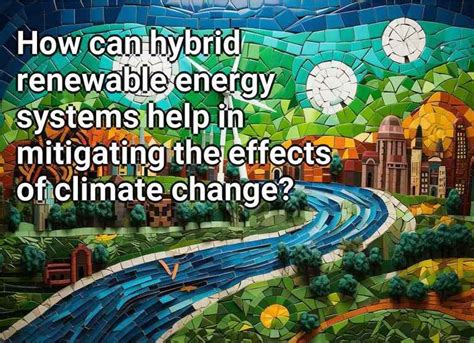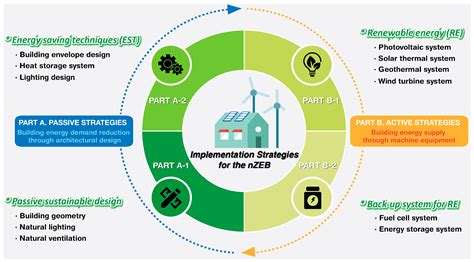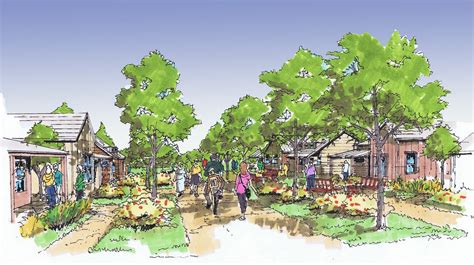When envisioning the future, one cannot help but be captivated by the idea of a world where buildings seamlessly integrate with the natural environment, where sustainability is embedded into the very fabric of our urban landscapes. It is a vision that embraces the harmonious coexistence of nature and architectural structures, creating a symbiotic relationship that benefits both the planet and its inhabitants.
In this era of rapid urbanization and growing concerns about climate change, sustainable architecture emerges as a beacon of hope, offering innovative solutions to the environmental challenges we face. Through the implementation of eco-friendly design principles, sustainable materials, and energy-efficient technologies, architects are revolutionizing the way we construct buildings, aiming to minimize our ecological footprint while maximizing human well-being.
The rise of sustainable architecture is not merely limited to its environmental benefits. It encompasses a holistic approach that encompasses economic, social, and cultural dimensions as well. By utilizing renewable energy sources, optimizing resource utilization, and incorporating biophilic design elements, sustainable buildings not only reduce energy consumption and greenhouse gas emissions but also create healthier, more livable spaces for occupants.
This article delves deep into the world of sustainable architecture, exploring the multifaceted aspects of this groundbreaking movement. From exploring the latest trends and innovations to highlighting exemplary green building projects around the world, we aim to inspire and educate readers about the transformative potential of sustainable architecture. Join us on this journey as we explore how sustainable architecture is reshaping our cities and paving the way towards a greener and more sustainable future.
The Impact of Eco-friendly Building Design on Mitigating Climate Change

In this section, we will explore the significant contribution that sustainable architecture makes in combating the adverse effects of climate change. By implementing eco-friendly building design practices, we can reduce greenhouse gas emissions, conserve energy, and promote overall environmental sustainability.
One of the key aspects of sustainable architecture is its ability to minimize the carbon footprint associated with the construction and operation of buildings. Through the use of renewable materials, efficient insulation, and intelligent design principles, sustainable buildings can significantly reduce the amount of energy needed for heating, cooling, and lighting. This not only reduces dependence on fossil fuels but also lowers the emissions of harmful gases that contribute to global warming.
Sustainable architecture also embraces the concept of passive design, which takes advantage of natural resources such as sunlight, wind, and vegetation to achieve optimal energy efficiency. By strategically positioning windows, incorporating green roofs, and utilizing natural ventilation systems, buildings can passively harness renewable energy sources and minimize the need for artificial heating and cooling.
Another powerful aspect of sustainable building design lies in its ability to promote the conservation of water resources. Through effective rainwater harvesting systems, graywater recycling, and efficient plumbing fixtures, sustainable buildings can significantly reduce water consumption, especially in regions prone to water scarcity. By implementing these practices, we not only conserve a precious and limited resource but also alleviate the pressure on water treatment and distribution infrastructure.
In addition to its environmental benefits, sustainable architecture also plays a role in improving the overall health and well-being of occupants. By incorporating biophilic design principles, which integrate natural elements and materials into the built environment, sustainable buildings can enhance air quality, reduce noise pollution, and create a connection with nature. This, in turn, contributes to improved indoor comfort, productivity, and overall occupant satisfaction.
Furthermore, sustainable architecture has the potential to inspire and educate communities about the importance of environmental stewardship. By showcasing the benefits and feasibility of sustainable building practices, architects, designers, and builders can raise awareness and drive positive change towards a more sustainable and resilient future.
| Benefits of Sustainable Architecture in Combating Climate Change |
|---|
| Reduction in greenhouse gas emissions |
| Conservation of energy |
| Utilization of renewable resources |
| Minimization of water consumption |
| Enhancement of occupant health and well-being |
| Promotion of environmental awareness and education |
Designing for a Sustainable Future: Advancements in Eco-Friendly Construction Materials
In this section, we explore the concept of creating a more environmentally-friendly and sustainable future through innovative approaches to building materials. By shifting away from traditional construction materials, architects and designers can embrace new opportunities that promote greener and more sustainable building practices.
Embracing Nature: By incorporating organic and natural materials into building designs, architects can create spaces that seamlessly blend with the surrounding environment. Utilizing sustainable timber, bamboo, cork, and other renewable materials not only reduces the carbon footprint but also enhances the aesthetic appeal of the structure.
Revolutionizing Concrete: Concrete is a widely-used construction material, but its production contributes significantly to carbon emissions. However, advancements in eco-friendly concrete, such as the use of recycled aggregates, fly ash, and alternative cements, are offering greener alternatives without compromising on strength and durability.
Exploring Green Insulation: Insulation plays a critical role in maintaining energy efficiency within buildings. Traditional insulation materials, such as fiberglass and polystyrene, have negative environmental implications. However, sustainable options like cellulose insulation made from recycled paper or natural fiber insulation derived from materials like hemp or sheep's wool, provide effective thermal insulation while reducing the ecological impact.
Harnessing Solar Power: As the demand for renewable energy grows, integrating solar technology into architectural designs becomes paramount. Innovative solar panels and building-integrated photovoltaics (BIPV) allow structures to generate their own electricity, reducing reliance on non-renewable sources and minimizing the carbon footprint.
Rethinking Facades: Traditional facades often lack insulation capabilities and contribute to heat loss or gain. However, incorporating green facades, such as living walls or vertical gardens, not only enhances the aesthetics but also improves thermal regulation, air quality, and biodiversity while reducing energy consumption.
Embracing Eco-Friendly Composites: Engineered wood, recycled plastic lumber, and bio-based composites offer sustainable alternatives to conventional construction materials. These eco-friendly composites not only reduce waste but also decrease the demand for virgin materials, thereby promoting a greener and more circular economy.
In conclusion, as we design for a greener and more sustainable future, exploring and adopting innovative building materials is crucial. By embracing organic elements, revolutionizing concrete, exploring green insulation, harnessing solar power, rethinking facades, and utilizing eco-friendly composites, architects and designers can create structures that prioritize sustainability without compromising on functionality or aesthetics.
From Energy Efficiency to Net-Zero: Reducing Environmental Impact through Sustainable Building Practices

In this section, we will explore the journey of green buildings from being simply energy-efficient to becoming net-zero structures, and how these innovative designs contribute to minimizing their environmental impact.
Green buildings have evolved beyond the realm of energy efficiency, progressing towards the concept of net-zero buildings. While energy efficiency focuses on reducing energy consumption through various design strategies, net-zero buildings aim to generate as much energy as they consume, resulting in a neutral or even positive energy balance.
By implementing sustainable architecture practices, such as efficient insulation, passive design principles, and the utilization of renewable energy sources, green buildings strive to minimize their carbon footprint. These eco-friendly structures leverage the natural elements, optimizing airflow, sunlight, and temperature regulation to reduce the reliance on artificial heating, cooling, and lighting systems.
Furthermore, sustainable building materials are utilized to ensure minimal environmental impact throughout the entire lifecycle of a structure. These materials are sourced responsibly, promoting resource conservation, waste reduction, and the use of recycled or renewable materials. By employing materials with low embodied energy and environmentally friendly manufacturing processes, green buildings contribute to a more sustainable and greener future.
Another essential aspect of green buildings is water efficiency. By integrating efficient plumbing fixtures, rainwater harvesting systems, and graywater recycling, these buildings aim to reduce water consumption and wastage, promoting a more sustainable water management system. Additionally, green buildings often incorporate landscaping features that require minimal irrigation, further reducing the reliance on potable water sources.
In conclusion, green buildings have evolved from energy-efficient structures to net-zero buildings, aiming to reduce their environmental impact through various sustainable practices. By optimizing energy efficiency, utilizing eco-friendly materials, and implementing water-efficient systems, these buildings minimize their carbon footprint and contribute to a more sustainable and environmentally conscious future.
The Impact of Green Building Certification in Promoting Eco-Friendly Architecture
In the era of sustainability and environmental preservation, the concept of green building certification plays a critical role in driving the adoption of sustainable architecture practices. This certification serves as a powerful tool that encourages architects, builders, and developers to prioritize eco-friendly design principles and construction techniques in their projects.
One of the key benefits of green building certification is its ability to provide a clear framework and set of guidelines that promote the integration of sustainable solutions into architectural designs. By offering comprehensive criteria and standards, certification programs encourage architects to consider various aspects such as energy efficiency, water conservation, waste reduction, and the use of environmentally friendly materials.
- Furthermore, green building certification serves as a catalyst for innovation within the architectural industry. It fosters the development of cutting-edge technologies and techniques that can improve the sustainability performance of buildings. Architects are compelled to explore innovative design strategies, implement renewable energy systems, and incorporate nature-inspired elements to achieve higher certification levels.
- Moreover, green building certification endorses the concept of lifecycle thinking in architecture. It encourages architects to approach their projects with a holistic perspective, considering not only the construction phase but also the long-term operational and maintenance aspects of the building. This approach ensures that the environmental impact of the building is minimized throughout its entire lifecycle.
- Additionally, green building certification programs create a sense of accountability and transparency within the architectural community. By undergoing a rigorous certification process, architects and developers showcase their commitment to sustainability, enhancing their reputation as responsible practitioners. This transparency also allows clients, tenants, and investors to make informed decisions by considering the environmental performance of certified buildings.
In conclusion, green building certification plays a crucial role in promoting sustainable architecture by providing a clear framework, fostering innovation, endorsing lifecycle thinking, and promoting accountability. This certification serves as a powerful driver for architects and developers to prioritize sustainable design principles and contribute to a greener future.
Creating Sustainable and Eco-Friendly Communities: A Vision for Urban Planning

In the realm of urban planning, the focus now lies in developing communities that prioritize sustainability and environmentally conscious practices. As we move towards the future, the concept of urban planning for sustainability has taken center stage, paving the way for the creation of green communities and eco-cities.
With a strong commitment to preserving our planet and minimizing our impact on the environment, the urban planning approach aims to integrate sustainable design principles into the development of cities and communities. This includes the implementation of green infrastructure, renewable energy sources, and efficient transportation systems, among other initiatives.
By fostering the creation of green communities, urban planners can ensure that the areas are designed with a holistic and eco-friendly approach. Such communities incorporate green spaces, including parks and gardens, to promote a connection between residents and nature. Additionally, sustainable building practices, such as the use of recycled materials and energy-efficient technologies, are integrated into the construction process.
One of the key elements in designing sustainable communities is the promotion of walkability and biking infrastructure. By prioritizing pedestrian and cyclist-friendly pathways, urban planners aim to reduce reliance on private vehicles, ultimately decreasing carbon emissions and promoting a healthier lifestyle for residents.
Furthermore, the creation of eco-cities goes beyond the physical aspects of sustainability. It involves fostering a sense of community and establishing social frameworks that encourage collaboration and resource sharing. This can be achieved through the implementation of shared spaces, community gardens, and collective initiatives aimed at reducing waste and encouraging sustainable practices in everyday life.
In essence, urban planning for sustainability is a visionary approach that aims to reshape our cities into green, thriving, and inclusive spaces. By embracing this concept, we can transform the future of urban development and create a harmonious coexistence between humans and the environment.
FAQ
What is green building?
Green building refers to the practice of designing, constructing, and operating buildings in an environmentally friendly and resource-efficient manner. It aims to minimize the negative impact on the environment and promote sustainability.
Why is sustainable architecture important?
Sustainable architecture is important because it has numerous benefits for both the environment and the people. It helps conserve natural resources, reduces energy consumption, improves indoor air quality, and creates healthier and more comfortable living and working spaces.
How does green building contribute to environmental preservation?
Green building contributes to environmental preservation by using sustainable construction materials, implementing energy-efficient designs, optimizing water usage, and promoting waste reduction and recycling. These strategies help minimize carbon emissions, reduce waste production, and protect natural resources.
What are the advantages of incorporating green building practices?
There are several advantages of incorporating green building practices. It can lower energy costs in the long run, enhance the market value of buildings, improve occupant health and productivity, reduce environmental impact, and contribute to the overall sustainability and resilience of communities.
Are there any challenges or limitations to implementing green building practices?
While green building practices offer numerous benefits, there are challenges and limitations to their implementation. These may include higher upfront costs, the need for specialized knowledge and expertise, potential difficulties in sourcing sustainable materials, and the need for ongoing monitoring and maintenance to ensure optimal performance.
What is sustainable architecture?
Sustainable architecture refers to the practice of designing buildings that are environmentally friendly, energy-efficient, and socially responsible. It focuses on using renewable resources, reducing the carbon footprint, and promoting human well-being.



